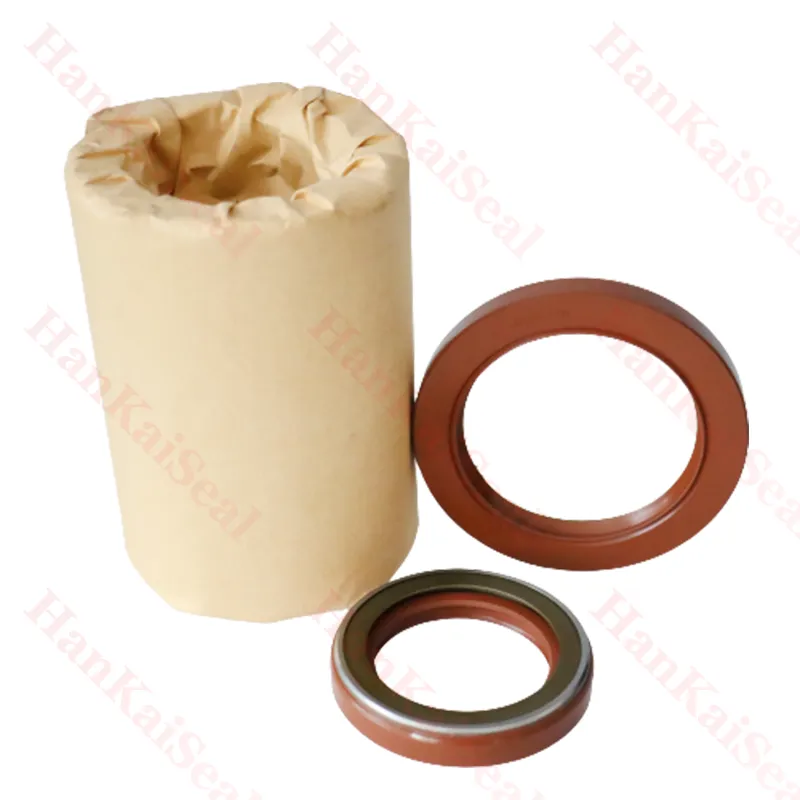des . 11, 2024 20:37 Back to list
single acting piston seal
Single Acting Piston Seals A Comprehensive Overview
Single acting piston seals are integral components used in various hydraulic and pneumatic systems. They serve the critical function of containing fluid and maintaining pressure within a cylinder while allowing for the smooth operation of the piston. Understanding the mechanisms, applications, and benefits of single acting piston seals is essential for engineers, manufacturers, and technicians involved in system design and maintenance.
What are Single Acting Piston Seals?
Single acting piston seals are designed to function effectively in one direction only. Typically, these seals are positioned in hydraulic or pneumatic cylinders where they ensure that pressure is retained on one side of the piston while allowing the piston to move in a single direction. Unlike double acting piston seals, which can contain pressure from both sides of the piston and allow for movement in both directions, single acting seals are more straightforward in design and functionality.
Materials and Design
Single acting piston seals can be made from a variety of materials, including elastomers, plastics, and composite materials. The choice of material largely depends on the application, the type of fluids involved, and the operating conditions such as temperature and pressure. Common materials used in single acting seals include
- Nitrile Rubber (NBR) Known for its excellent oil resistance, NBR is often used in environments where petroleum-based fluids are present. - Fluoroelastomers (FKM) These materials offer superior chemical resistance and are widely used in aggressive environments. - Polyurethane Valued for its wear resistance and flexibility, polyurethane seals can handle a range of pressures.
Design-wise, single acting piston seals are typically shaped as O-rings, lip seals, or custom profiles tailored to specific applications. The design ensures that as the piston moves, the seal compresses against the cylinder wall, creating a tight seal that prevents fluid leakage.
Applications
single acting piston seal

The applications for single acting piston seals are vast, spanning across various industries including
- Automotive Used in hydraulic brake systems, transmissions, and suspension systems where reliable performance and safety are critical. - Aerospace In aircraft hydraulic systems, where seals must withstand extreme pressures and environmental conditions. - Manufacturing Machinery Employed in hydraulic presses and actuators, providing essential sealing for operational efficiency. - Medical Equipment Used in devices that require precise pressure control to ensure functionality, such as syringe pumps.
Advantages of Single Acting Piston Seals
1. Simplicity of Design The straightforward nature of single acting seals allows for easier installation and maintenance compared to more complex sealing systems. 2. Cost-Effectiveness Generally, single acting piston seals are less expensive than double acting seals, making them an economical choice for many applications. 3. Effective Sealing in One Direction They provide reliable leakage prevention in systems where movement is predominantly in one direction, ensuring that pressure is maintained effectively during operation.
Challenges and Considerations
Despite their advantages, single acting piston seals do pose some challenges. The primary concern is that if the piston rod is subjected to back pressure (pressure on the opposite side of the piston), it can lead to seal failure or damage. Therefore, it is crucial to ensure that the application is suitable for single acting seals, and that conditions are monitored closely.
Conclusion
Single acting piston seals play a vital role in many industrial applications, combining simplicity, effectiveness, and functionality. As technology continues to advance, innovations in materials and design are likely to improve the performance and longevity of these critical components. For engineers and designers, understanding the characteristics and applications of single acting piston seals is essential for developing efficient and reliable systems.
-
TCN Oil Seal Metal Ring Reinforcement for Heavy Machinery
NewsJul.25,2025
-
Rotary Lip Seal Spring-Loaded Design for High-Speed Applications
NewsJul.25,2025
-
Hydraulic Cylinder Seals Polyurethane Material for High-Impact Jobs
NewsJul.25,2025
-
High Pressure Oil Seal Polyurethane Coating Wear Resistance
NewsJul.25,2025
-
Dust Proof Seal Double Lip Design for Construction Equipment
NewsJul.25,2025
-
Hub Seal Polyurethane Wear Resistance in Agricultural Vehicles
NewsJul.25,2025
-
The Trans-formative Journey of Wheel Hub Oil Seals
NewsJun.06,2025
Products categories
















